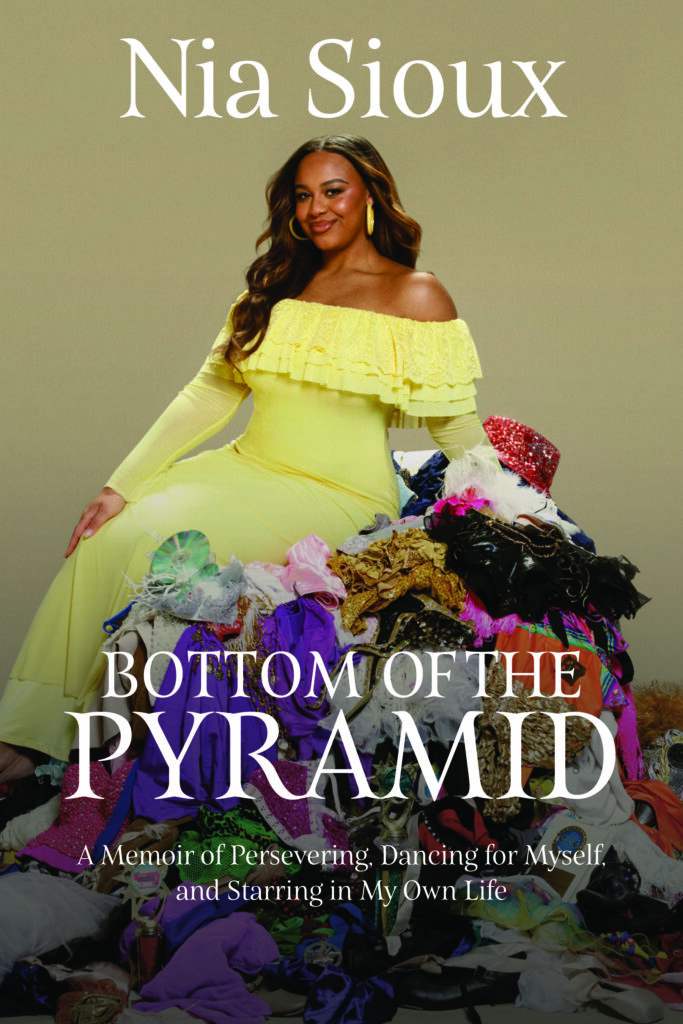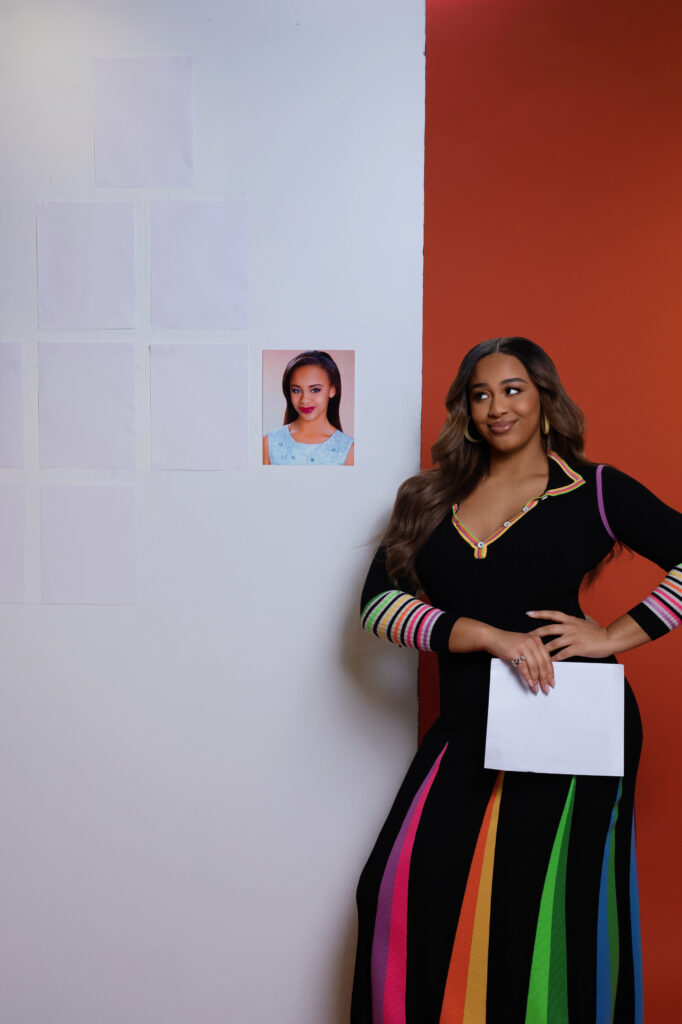
“Bottom of the Pyramid”: Nia Sioux, in Her Own Words
Eight years after her seven-season run on the hit reality show “Dance Moms” ended, Nia Sioux is ready to share her side of the story. The 24-year-old dancer, singer, and actress is releasing her memoir, Bottom of the Pyramid: A Memoir of Persevering, Dancing for Myself, and Starring in My Own Life (Harper Horizon), on November 4. Chronicling her life both on and off camera during “Dance Moms,” the book reveals the show’s often toxic inner workings with unflinching honesty. One of six debut cast members, Sioux was consistently placed at the bottom of a weekly “pyramid” ranking the dancers’ performances at competitions. In Bottom of the Pyramid, Sioux rejects this narrative and redefines her story as one of grit and grace.

Dance Spirit caught up with Sioux to talk about the writing process, her relationship to dance, and what it really means to be at the bottom of the pyramid.
How did you know it was time to share your side of the story, and how does it feel now that the book is finally out in the world?
For a long time I wanted to share my story, but I was nervous about how people—not just my cast members, but also people who had watched the show—would take it. It has a lot of ups and downs. I never want to bring up drama just to bring up drama, but at the end of the day, that drama was my life, and I’ve never gotten to share it. Once I got over the fear of what other people would think about my experience, it just felt like the right time.
Could you speak about the book’s title, Bottom of the Pyramid?
Bottom of the Pyramid is a testament to my life, my journey. I was labeled the bad dancer, the weak link, the bottom, by my dance teacher [Abby Lee Miller] on the show. Before I knew it, that’s kind of how the world knew me. So I wanted to take that title and turn it into something positive. I’ve always been an optimistic person, and that’s really what the book is about—being at the bottom doesn’t mean you have to stay there. You can climb your way to the top.
You mention how writing the book brought back memories and stirred up intense emotions for you. Was there anything you learned about yourself during this process?
I learned that I hadn’t processed everything—I never really had closure with the show.
But I also realized that throughout the whole show, I was confident. Back in the day, I wouldn’t have said that, but I was. Even though at times I felt like I wasn’t wanted or wasn’t good enough, in the back of my head I still had the idea that I was there for a reason. I always had the passion and drive to keep going. I think that takes courage and a lot of guts.

You recount some examples of bullying and racism from authority figures. What was it like to share these experiences in writing?
It was really important for me to write about experiences with authority figures who abused their power because not only is it healing for me, but I know a lot of people, especially in the dance world, have dealt with the same things. I’ve had people comment online or come up to me and say, “Hey, I was the only Black girl at my dance studio, and I dealt with similar experiences.” I think it’s important that we share our stories, because that’s the only way we can connect and lean on one another.
Your mom plays an important role in this book. How did she support its creation? My mom has been part of the whole process. I had her read everything I wrote and watch back episodes with me. This book is honestly as much hers as it is mine. I kind of view this as our story because our stories are intertwined. She’s the one who encouraged me to write about some of the difficult things, and she always let me speak my truth.
The majority of this book focuses on your childhood on “Dance Moms.” If that younger Nia could see you now, what do you think she’d say?
I think she’d be so proud! I’ve had the most amazing opportunities postshow, and I’m only 24. Not only career-wise but in my personal life, as well—she’d be like, “Wow, you have friends, that’s crazy!” I didn’t have that many friends growing up, and I was insecure about my body when I was a tween. Now, I’m finally at a place where I love myself and I have good people in my life.

You also talk about how your relationship with dance continues to evolve as you heal from past traumas. Can you describe that relationship currently?
After the show ended, it took me a second to find my love for dance again because I felt burnt out. I had gone to more dance competitions than anyone should in their lifetime, and I was constantly torn down—not just by cast members but also by the public. I learned to take my power back and returned to dancing in college. I was part of a dance club, which was healing because I was just dancing for fun. It definitely took the pressure off, not competing anymore.
I keep my dance life more private now because people are still critical. Maybe at some point I’ll share more of my dancing, but for now it’s my safe space. I’m protecting this love [of dance] because it’s fragile. I have to be gentle with it.
What do you hope young Black dancers can take away from reading this?
It’s hard when you’re in these spaces where you don’t see anyone who looks like you. You have to work twice as hard, you know? Just know that your hard work pays off and that you are seen. We’ve got each other, and we have a community to lean on.
What advice would you give to other dancers who want to start advocating for themselves and telling their own stories?
I think it’s really important to be honest with yourself. Storytelling is so powerful. It’s important that we share our stories because we live in a time where they’re not being honored. They’re being hidden, so we have to speak up. That’s the only way things get better—the only way we learn and create community. Representation matters. Everyone’s story matters.
The post “Bottom of the Pyramid”: Nia Sioux, in Her Own Words appeared first on Dance Spirit.